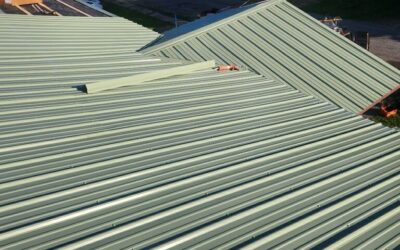The Wind Resistance of Asphalt Shingles: What You Need to Know
A Detailed Guide by S&K Construction and Remodeling LLC
When it comes to protecting your home from the elements, your roof plays a crucial role in keeping you safe and secure. While your roof serves as a barrier against rain, snow, and sun, wind is one of the most destructive forces that can damage your roof. Understanding the wind resistance of your roofing material is essential to ensuring that your home is well-protected during storms, hurricanes, or strong winds.
Asphalt shingles are one of the most popular roofing materials due to their affordability, durability, and ease of installation. But how well do they stand up to wind? This blog will delve deep into the wind resistance of asphalt shingles, explore the factors that affect their performance in high winds, and provide useful tips on how you can enhance your roof’s resilience.
At S&K Construction And Remodeling LLC, we are dedicated to providing top-quality roofing solutions in Youngstown, Ohio. With years of experience and as an Owens Corning Preferred Contractor, we ensure your roof can withstand whatever Mother Nature throws at it, including high winds.
In this article, we will discuss:
- What is wind resistance in roofing?
- How wind resistance affects asphalt shingles
- What affects the wind resistance of asphalt shingles?
- How do asphalt shingles compare to other roofing materials in terms of wind resistance?
- What is the wind resistance rating of asphalt shingles?
- How can you enhance the wind resistance of your roof?
- S&K Construction and Remodeling LLC’s role in wind-resistant roofing
What is Wind Resistance in Roofing?
Wind resistance refers to a roofing material’s ability to withstand the force of wind without suffering damage. High winds, such as those experienced during storms or hurricanes, can cause shingles to lift, tear, or be completely blown off the roof. A roof’s wind resistance is typically measured in miles per hour (mph), with stronger winds being more damaging to less-resistant materials.
For a roof to be wind-resistant, it must be able to resist the uplift force exerted by the wind. This is especially important in areas that experience severe weather conditions, such as tornadoes, hurricanes, or strong coastal winds. If your roof isn’t properly designed or installed, wind damage can lead to major repairs, structural damage, and even water infiltration into your home.
How Wind Resistance Affects Asphalt Shingles
Asphalt shingles are made from a combination of organic materials and fiberglass, with an outer layer of mineral granules that help protect the shingles from UV rays and weather. The design of asphalt shingles is relatively simple, but they are remarkably effective at withstanding wind, especially when installed properly.
However, as with any roofing material, asphalt shingles are not immune to wind damage. Wind can cause asphalt shingles to lift, crack, or even blow off the roof, especially if they are installed incorrectly or have reached the end of their lifespan.
The wind resistance of asphalt shingles is directly influenced by several factors, including:
- Shingle quality: Higher-quality shingles are generally more resistant to wind.
- Installation: Proper installation is crucial for ensuring that the shingles stay in place during high winds.
- Roof pitch and design: Roofs with steeper slopes or unique designs may be more vulnerable to wind uplift.
In most cases, wind damage to asphalt shingles is a result of either the shingles not being securely fastened or the wind’s force being strong enough to lift and move the shingles.
What Affects the Wind Resistance of Asphalt Shingles?
Several factors contribute to the wind resistance of asphalt shingles. By understanding these factors, you can better assess how your roof will perform in high winds and take steps to enhance its durability.
1. Shingle Type and Quality
Not all asphalt shingles are created equal. There are different types of asphalt shingles, and their wind resistance can vary significantly based on their design and quality.
- 3-tab shingles: These are the most basic and affordable asphalt shingles, and they offer moderate wind resistance. They are typically rated for wind speeds up to 60-70 mph.
- Architectural shingles: Also known as dimensional shingles, these are thicker and more durable than 3-tab shingles. They are designed with multiple layers, which provide better wind resistance and are typically rated for 80-130 mph winds.
- Luxury shingles: These are high-end shingles that are designed to be even more durable and resistant to severe weather. They are typically rated for winds up to 130 mph or more.
2. Shingle Weight
The weight of asphalt shingles also plays a role in wind resistance. Heavier, high-quality shingles are more likely to stay in place during high winds compared to lightweight or low-quality options. When choosing asphalt shingles for your roof, consider investing in those that have a higher weight and thicker construction for increased wind resistance.
3. Installation Method
The way asphalt shingles are installed plays a significant role in their ability to withstand wind. Poor installation can leave shingles vulnerable to being torn off in high winds. Some key installation considerations include:
- Proper nailing: Nails should be placed in the correct spots and driven into the roof deck securely to hold shingles in place.
- Number of nails: Using the recommended number of nails per shingle is essential. Some areas prone to high winds may require extra nails to reinforce the shingles.
- Starter shingles: Starter shingles are used at the eaves to prevent wind-driven rain from getting underneath the shingles and causing damage.
- Sealant: Asphalt shingles are typically sealed to the roof deck with an adhesive strip. Ensuring this seal is properly applied helps prevent wind uplift.
4. Roof Pitch
The pitch or slope of the roof can impact how wind interacts with the surface of the shingles. Roofs with a steeper slope tend to shed wind more effectively than flatter roofs, which may allow wind to create more upward force beneath the shingles. This makes flat or low-pitched roofs more vulnerable to wind damage. If you live in an area prone to high winds, consider discussing your roof’s pitch with a professional roofing contractor.
5. Roof Design
Certain roof designs, such as gable roofs, can be more susceptible to wind damage than other types, such as hip roofs. This is because gable roofs have exposed ridgelines that can catch the wind, creating more lift. A hip roof, on the other hand, has slopes on all sides and is more resistant to wind uplift. A roofing professional can help you determine if your roof design is vulnerable and suggest improvements.
How Do Asphalt Shingles Compare to Other Roofing Materials in Terms of Wind Resistance?
While asphalt shingles are widely used and affordable, they may not always be the most wind-resistant option. Let’s compare asphalt shingles with other popular roofing materials when it comes to wind resistance.
1. Metal Roofing
Metal roofs are extremely durable and can withstand much higher wind speeds compared to asphalt shingles. Many metal roofing systems are rated to resist winds of 140-180 mph, making them ideal for areas that experience frequent storms or hurricanes. However, metal roofing is more expensive than asphalt shingles, both in material and installation costs.
2. Tile Roofing
Concrete or clay tile roofs offer high wind resistance, often rated for winds up to 150 mph or more. They are more durable than asphalt shingles but can be more prone to breakage if impacted by flying debris. Tile roofs also require specialized installation techniques, which can increase the overall cost.
3. Wood Shakes
Wood shakes and shingles are often used for aesthetic purposes, but they are less wind-resistant than asphalt shingles. They may be able to withstand winds up to 90 mph, but they are more susceptible to warping, cracking, and splitting under high wind conditions. Regular maintenance is also required to keep them in top shape.
4. Slate Roofing
Slate roofing is known for its longevity and excellent wind resistance. Slate can typically handle winds in the range of 100-200 mph, depending on the quality and installation. However, slate is significantly more expensive than asphalt shingles and requires careful installation to prevent breakage.
What Is the Wind Resistance Rating of Asphalt Shingles?
Asphalt shingles are generally rated based on their ability to withstand certain wind speeds, with the most common ratings being 60 mph, 80 mph, and 130 mph. Higher-quality architectural or luxury shingles can withstand higher wind speeds and may come with extended warranties for wind resistance.
Most standard asphalt shingles are rated to withstand wind speeds up to 60-80 mph. However, architectural shingles are typically rated for winds up to 110-130 mph. If you live in an area prone to hurricanes or severe storms, it’s important to choose shingles with a higher wind resistance rating to ensure your roof can handle the elements.
How Can You Enhance the Wind Resistance of Your Roof?
If you want to maximize the wind resistance of your asphalt shingles, consider the following tips:
- Choose High-Quality Shingles: Opt for architectural or luxury asphalt shingles that are designed to handle stronger winds.
- Proper Installation: Work with a reputable roofing contractor, like S&K Construction and Remodeling LLC, to ensure your shingles are installed correctly.
- Add Extra Fasteners: Using extra nails or fasteners can help secure the shingles more tightly to the roof deck, reducing the risk of wind uplift.
- Install a Roof Underlayment: A high-quality underlayment can provide additional protection and keep moisture out if shingles are lifted by wind.
- Perform Regular Maintenance: Inspect your roof regularly to check for damage or wear and tear, particularly after severe weather events.
S&K Construction and Remodeling LLC’s Role in Wind-Resistant Roofing
At S&K Construction and Remodeling LLC, we understand the importance of a wind-resistant roof. We specialize in helping homeowners in Youngstown, Ohio, and surrounding areas select, install, and maintain the best roofing materials for their needs. Whether you’re installing new asphalt shingles or upgrading to a more wind-resistant material, our experienced team ensures that your roof can withstand the harshest conditions.
Conclusion
When it comes to the wind resistance of asphalt shingles, it’s crucial to choose the right material, ensure proper installation, and take steps to maintain the integrity of your roof over time. Asphalt shingles can provide excellent protection for your home, especially when you invest in high-quality shingles and work with a trusted roofing contractor like S&K Construction and Remodeling LLC.
If you’re concerned about your roof’s performance in high winds or need an expert opinion, don’t hesitate to contact us for a professional roof inspection. We can help you make the best decisions for your home and provide reliable, long-lasting roofing solutions.
Get in touch with S&K Construction and Remodeling LLC today to learn more about enhancing your roof’s wind resistance.
 (440) 307-2060
(440) 307-2060




